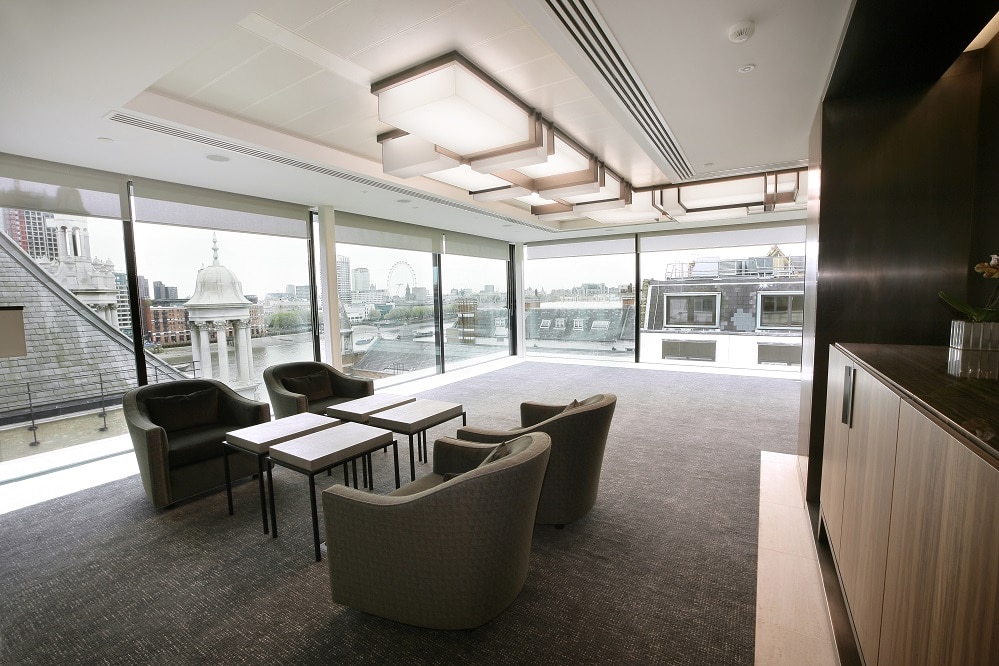Manufacturers have been talking up the benefits of installing LED lighting systems for years. Paul Thompson looks at how the market has finally matured enough to deliver.
Champions of LED lighting installations have long spoken about the advantages their specification can have over the use of standard fluorescent light fittings. They have claimed that light emitting diode based systems offer better light coverage, provide a clearer light, are more energy efficient and, importantly for building owners and landlords, save cash since they first came to the market.
According to manufacturers, the latest LED systems offer superior light with no shadowing, have a longer life, are virtually zero maintenance, are better for the environment and can quickly pay back any initial investment thanks to this improved performance.
But their uptake has always been held back by higher front-end costs than those of the cheaper fluorescent lighting systems. Property owners and developers have been blind to the efficiency of LED lighting and happier splashing out less money on cheaper systems to deliver building refurbishment or new build projects on time.
Hampered by long production lead-in times for LED lights, the reluctance to switch from standard fluorescent systems is easy to understand, but times change and over recent years not only have those lead-in times fallen considerably but demand has increased.
Just four years ago lead-in times for manufacturers were between six and eight weeks. Now those same systems can be turned around in about three weeks. Production capacity has increased as demand from the market has increased; no-one particularly cares which was the chicken and which was the egg, demand is being sated and there is more than enough capacity to deliver any further hike.
“I think the LED market has matured in the UK over the last four years or so,” said Paul Etherington, senior project manager at fit-out and lighting installation specialist BW. “People are much more willing to specify LED installations. There is confidence that the market is capable of meeting any current or future demand.”
And that demand is building across all sectors of the market. LED lighting is just as likely to be specified by designers looking for an installation in a residential development as it is in a city centre office block. New build projects are more likely to be complete LED installations, but the demand for systems in retrofit and refurbishment projects has soared, according to Dave Clements, managing director of bespoke lighting solution provider Future Designs. “It has got to the point where LED has the new build office market pretty much sown up and there are no more fluorescent lights specified, particularly in the lucrative market across London and the South East. Refurbishment schemes, too, driven by landlords and property managers wanting to drive efficiencies through their portfolios. They can make substantial savings by swapping to LEDs,” he commented.
Whole office block refurbishment projects can be hampered by the letting pattern of the building, though. If more than one client is renting space in the block it can be difficult to find a time when all those business are able to offer access to fit-out contractors. The work might have to be done on a piecemeal basis over a number of years, but this will still offer landlords the opportunity to make significant savings.
“There is no reason why LED and fluorescent lighting cannot be run concurrently. For instance, the property owner or manager may wish to install LED systems in common areas such as the reception foyer, stair and lift cores or toilets while a tenant opts not to update on the letting floor. Considerable savings through lower maintenance and lower energy use can still be made on those communal areas,” added Mr Clements.
One of the bonuses in the rise in popularity of LEDs in refurbishment projects is the ease of their installation. Being lighter and slimmer than fluorescent systems there is no need for expensive, invasive work that can take weeks to complete. “In some cases we have had to go back to the bare bones of a building, but more often than not, like most projects, if you get your specialists involved early enough then you get your benefits through the design process. Not only do you get an enhanced product but the existing structure can be used to suspend the LEDs,” said Mr Etherington.
Peter Gibbons, managing director at Bristol-based advertising and communications firm Genius Consultancy, is one property owner that is reaping the rewards of making the change from fluorescent lighting to LED at his Georgian city centre office block.
“We have noticed a significant difference in our energy use. It has dropped considerably since we had the LED systems installed. As well as the cost savings our team has noticed an improvement in the quality of the light they deliver,” he said. According to Mr Gibbons his LED installation gives a “cleaner” light that is more even and dresses the space better than its fluorescent counterparts. “I think the light they deliver is more direct and better quality than the linear and deep-box fluorescent lighting we had before.
It is the same specification, but just a cleaner light.”
It is a message that finally seems to be getting through to architects, designers, landlords and property developers.
Mr Clements added: “Around four years ago I did a talk to the British Institute of Facilities Management. I told them ‘don’t install LED yet’. Things have changed now. The capacity is there in the industry to meet increased demand and people accept the huge savings they offer over their lifetime. Pay-back times for that initial increase in up-front costs are plummeting as the price of new LED products falls thanks to increased demand.
“Modern LEDs are everything a lighting designer, manufacturer, building owner and user would want. They are a quantum leap in lighting design and now at last blue chip businesses have seen the light.”
Find out more www.thefis.org


